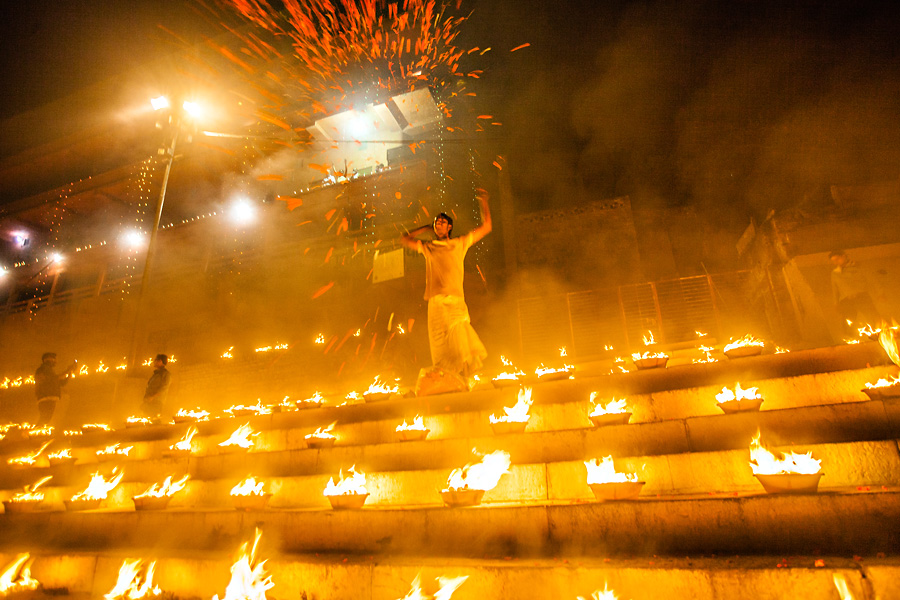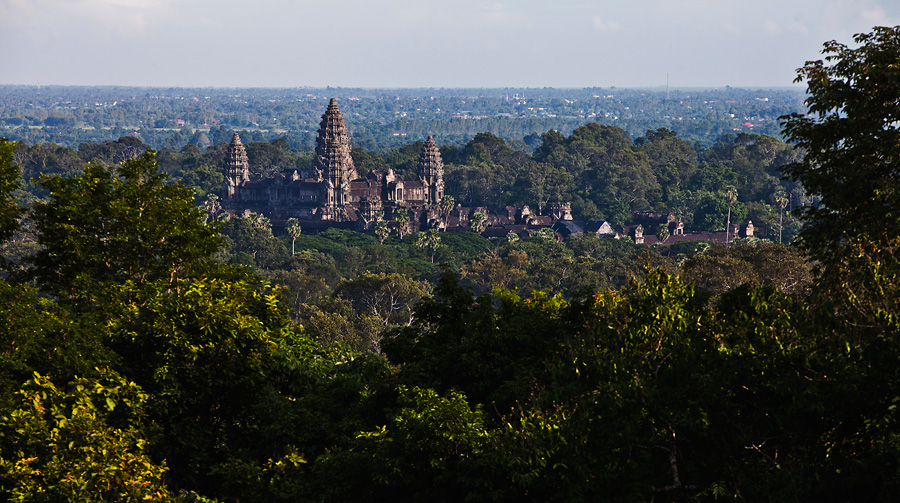For the uninitiated, Dev Diwali is a festival celebrated a fortnight after Deepavali, on the Karthika Poornima day.

On this day, Varanasi’s famed ghats leading to the river take a different colour. An entire three-kilometer stretch is lit with lamps while fireworks decorate the sky. It’s a spectacle that one should see to believe!
Walking the long wooded path towards Beng Melea Temple, I heard a mild sound of music coming through the air. It grew on me as I closed-in to its source – a bunch of uniformed men on a raised platform not far from the temple entrance. From a distance, something appeared to be wrong. As I got nearer, I realized that some of them were missing an arm, some were blind and some wore artificial limbs. A sign nearby informed that they were the victims of Cambodia’s landmine problem, making a living playing music for the tourists visiting the temples. There were music CDs available for $10 or if you did not want to buy one, you could always sit and listen and leave a donation.

Angkor Wat Temple in the tropical jungles of Cambodia. On the approach to some of the temples in the region, you will meet musicians who were victims of landmines planted across Cambodia in the seventies and eighties.
This was my first encounter of victims of Khmer Rouge’s days. From the days of civil war many decades ago, landmines buried across the country, especially in border areas, had claimed thousands of victims. Although a large number of them have been de-mined now with great effort, they still lurk in the remote jungles and occasionally explode on an unsuspecting rambler.
Sheep come home. At Langza Village in Spiti Valley, Himachal Pradesh, located in a far far place at an altitude of 14,000 deep in the mountains.

As the sun sets and it is nearly dark, the sheep that have gone grazing during the day return home. So do the cows and donkeys.
They are not the only animals of the village. Horses do not come home, and are fetched when needed. The yaks never come – they stay grazing in the highlands and are milked and managed from wherever they are.
Animals have played in important role in the culture of these mountains. Centuries ago, when there was little movement between Spiti and outside world, people almost lived a self-subsistent lifestyle. The livestock played a key role in making it happen. They were used for meat in winter months when nothing could be grown (and nothing was imported) on the land. The fur was used for making warm clothes that are essential for the cold weather. Butter, and perhaps milk, were among the essential energizing foods that helped survive the mountain weather. Perhaps living here wasn’t possible if not for the animals.


